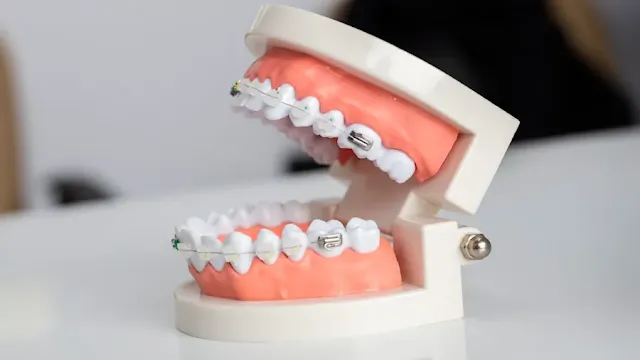If you're considering braces for yourself or your child, it's essential to understand the various costs involved. Braces are tailored to each individual's needs. The average cost of a braces treatment varies based on the specific alignment issues of the patient and the duration of their treatment. Here’s a breakdown of the costs by type:
- Metal Braces (Traditional Braces): $2,750 - $7,000
- Ceramic Braces: $3,500 - $8,000
- Lingual Braces: $8,000 - $11,000
- Invisalign: $3,750 - $7,500
These prices can vary based on geographical location, with orthodontists in rural areas often charging less than those in larger cities.
What is the cheapest option for braces?
The cheapest option for braces is typically traditional metal braces, which cost between $2,750 and $7,000. They are less expensive than other types such as ceramic, lingual, or Invisalign due to their simpler materials and technology. Metal braces are highly effective for a wide range of dental alignment issues, making them a popular and economical choice. For additional savings, consider seeking treatment at a dental school where services are offered at reduced rates by supervised orthodontic students. Always explore payment plans and potential insurance coverage to further reduce out-of-pocket expenses.
Are there any alternatives to braces?
While traditional metal braces are common, there are several less noticeable options available. Clear or tooth-colored brackets and wires make the braces far less visible. Invisalign, a series of clear, removable aligners, is another popular alternative for eligible patients. Additionally, other types of removable appliances can assist in aligning teeth.
For a purely cosmetic solution, some adults opt for veneers. Although veneers can improve the appearance of teeth, they are costly, may require future replacements, and do not address underlying bite problems.
What's the best age to get braces?
There isn't a definitive "best" age for braces. Typically, the optimal period for children to get braces is between the ages of 10 and 14, during which their mouths and heads are still developing, and their permanent teeth are emerging. The precise timing varies based on individual growth patterns and the emergence of adult teeth. Nonetheless, braces remain effective for older teenagers and adults, making orthodontic treatment versatile across various ages.
How long do people have to wear braces?
The duration of wearing braces typically ranges from 1 to 3 years for most children, though this can vary significantly based on individual growth and the complexity of the dental issues being addressed. The length of treatment also hinges on the patient's compliance, which includes maintaining excellent oral hygiene, following instructions for wearing auxiliary devices like rubber bands, avoiding foods that could damage the braces, and consistently attending follow-up appointments.
How Can I Pay for Braces?
Insurance Coverage
Many health or dental insurance plans cover orthodontic treatment, particularly for children under 18. However, coverage for adults is less common. If your plan includes orthodontic benefits, it typically covers up to 50% of the treatment cost with a lifetime maximum per child, often around $1,500. Always check with your insurance provider for specific details and maintain the same plan throughout your orthodontic treatment to avoid losing benefits due to pre-existing conditions.
Tax Deductions
If your dental insurance does not cover braces, or if there are additional out-of-pocket expenses, remember that dental health care costs, including braces if deemed medically necessary, are tax-deductible. However, to claim these deductions, the total cost must exceed 7.5% of your adjusted gross income. Visit the IRS website at IRS Topic 502 for more details.
Medicaid Coverage
For those qualifying for Medicaid, braces may be covered if they are deemed medically necessary. It's crucial to verify the extent of coverage and any associated conditions.
Making Braces More Affordable
Payment Plans: Many orthodontic offices offer flexible payment plans to help manage the cost of treatment.
Health Savings Accounts (HSAs) and Flexible Spending Accounts (FSAs): You can use funds from HSAs, FSAs, Health Reimbursement Accounts (HRAs), or Medical Savings Accounts (MSAs) to pay for orthodontic treatment with pre-tax dollars.
Orthodontic Schools: Dental or orthodontic schools often provide services at a reduced cost, supervised by experienced orthodontists.
Plan Ahead: An early orthodontic checkup, recommended by age 7, can help you anticipate the need for braces and budget accordingly.
Oral Hygiene with Braces
While you're undergoing orthodontic treatment, maintaining excellent oral hygiene is crucial. Brackets and wires can trap food particles and plaque, making your teeth more susceptible to staining and decay. Regular brushing with an electric toothbrush, such as the Oral-B iO, and specialized cleaning tools like the Oral-B Super Floss, designed for braces, can help keep your teeth and gums healthy.
Investing in braces is not just a financial decision but also a commitment to improving dental health and enhancing smiles. By understanding the costs involved and exploring all available payment and care options, you can make the process as smooth and affordable as possible.






No comments:
Post a Comment